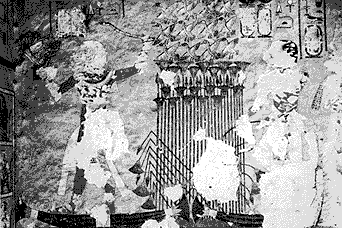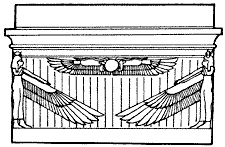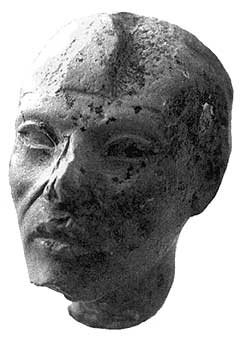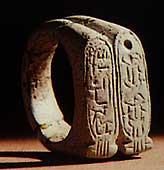|
|
|
 |
Tomb Ay finished a tomb (KV23) in the Valley of the Kings for his own tomb (originally started for Tutankhamun but was not completed in time for the burial). The sarcophagus chamber is unique for a royal tomb - it shows a very personal theme of Ay and his wife engaged in the royal pastime of spearing hippopotamus and fowling in the marshes (showing a personal scene in his tomb does have the echo of the Amarna royal tombs). This scene is very interesting in the fact that the queen who accompanies Ay is not Ankhesenamun (Tutankhamun's widow and the wife of Ay, infact Ay's main claim to the throne was that he was Ankhesenamun's husband (and also her grandfather)), but Ay's original wife Tey - who was described in Ay's Amarna tomb as Nefertiti's nurse and governess.  The painting of Ay and Tey, however, had been damaged in antiquity - as also had the giant red sarcophagus (smashed to pieces), Ay's name had also been hacked out and his name excised in all wall paintings and texts and no ushabti figures of Ay are known to exist.  Why such a complete destruction of Ay's tomb? He had turned Egypt back on the road to its old gods, he had proved his claim to the throne with his close association to the royal family, so why such an effort on the part of his successor (Horemheb) to erase Ay's identity to same such degree to that of Akhenaten? I have tried to answer this point in my theory about the parentage of Tutankhamun, but I will repeat the reason behind the attack on Ay's identity again here: When Horemheb took over control of the country after Ay's death he continued along the road that Tutankhamun and Ay had taken with the abandoment of the Atenist ideas - but more was needed - the only way forward was to wipe the slate clean. Horemheb would erase the identities of the heretic pharaoh and all those connected with the heretic, including Smenkhkare, Tutankhamun and Ay. But why did Ay's tomb suffer and Tutankhamun's not? Tutankhamun was the son of the last great pharaoh, Amenhotep III, and had turned Egypt away from the Aten. Ay on the other hand was a major player in the Atenist 'plan', he had a tomb at Amarna, he was the father to the wife of the heretic king, Ay was not a part of the 'royal family' his only claim was that he was the brother to Queen Tiye, father to Nefertiti and husband to Ankhesenamun for, presumably, a very short time. One may also theorise that Ay was also being punished for grapping at kingship - did he have Tutankhamun 'removed' from power so that he would rule Egypt for himself? Once he was in power did he then kill Ankhesenamun so that any link to royalty was through himself and so was the only true power left in Egypt? A gentle brother/father/grandfather or a mad killer who would do anything to get power?
|


